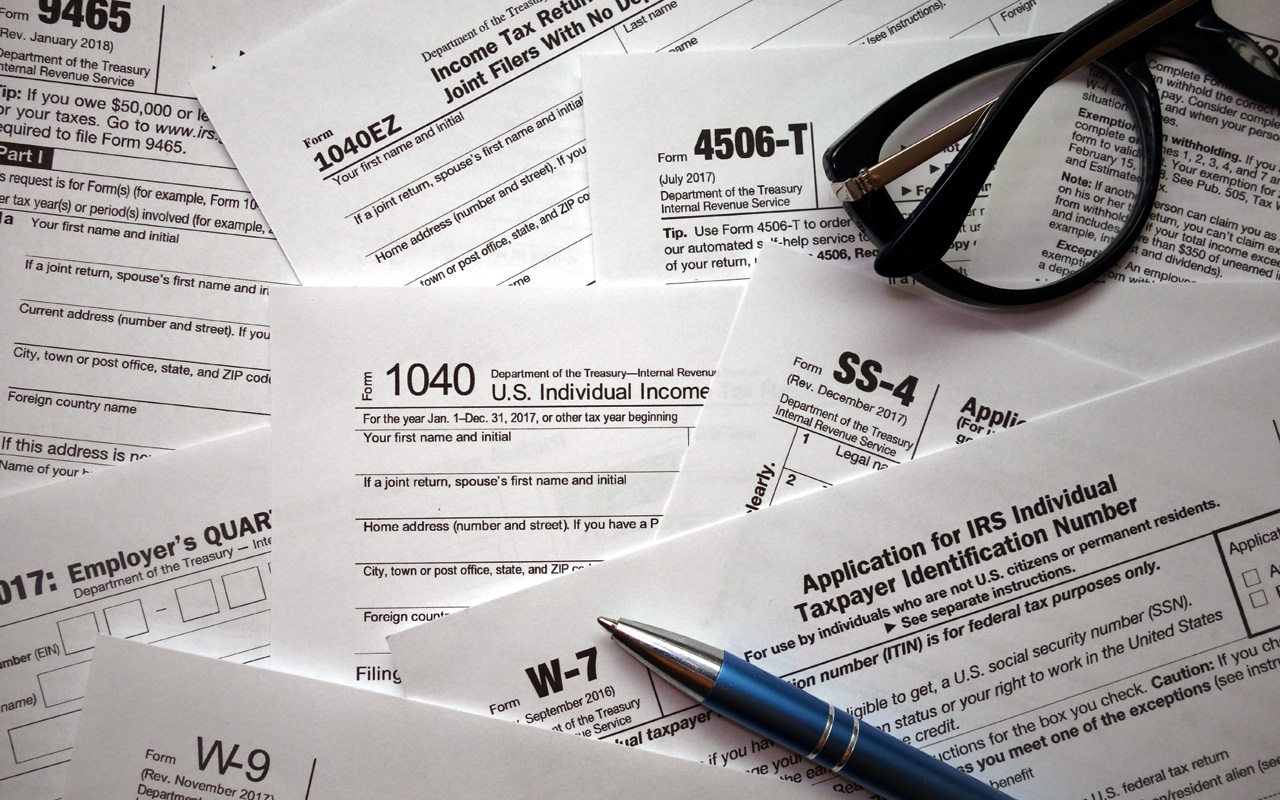The 5 Best Investments You Can Make in 2019
Everyone is looking forward to 2019 if only because 2018 has been so ugly.


Everyone is looking forward to 2019 if only because 2018 has been so ugly. But investors will have to mentally sturdy themselves: Before we can talk about the best investments to make in 2019, we have to quickly explore what has gone wrong in 2018.
The year started with a bang. The Standard & Poor’s 500-stock index returned nearly 6% that month following an epic 2017 that saw the index pop by 22%. But after that, it got rocky. Stocks stumbled in the first quarter, rallied for most of the second and third quarters, then rolled over and died again in October. It hasn’t gotten better since, and investors have had plenty to digest the whole way.
“Since January, I’ve talked about investors pricing the equity market for perfection,” writes Rodney Johnson in the November issue of The Cornerstone Report. “Unburdened by the tax man, corporations have booked exceptional gains throughout 2018, regularly posting earnings 20% or more above what they earned in 2017. But now it looks like the good times are coming to an end.”
Much of the massive gain in 2017 was likely powered by investors looking forward to the profit windfall following the corporate tax cuts at the end of last year. But that’s a year in the past. Going forward, we’ll be comparing post-tax-cut profits to post-tax-cut profits as opposed to higher post-cut to lower pre-cut. Meanwhile, stock prices are still priced for perfection. At 2 times sales, the S&P 500’s price-to-sales ratio is sitting near all-time highs, and the cyclically adjusted price-to-earnings ratio, or “CAPE,” of 29.6 is priced at a level consistent with market tops.
Fortunately, the new year provides an opportunity to wipe the slate clean. So what might we expect in the new year? Today, we’ll cover five of the best investments you can make in 2019, come what may in the stock market.

Soak the Tax Man
The stock market may have a hard time getting traction in 2019, or it may shoot higher from here after its 2018 breather. We all have our opinions as to what Mr. Market might do, of course. But none of us actually know until it happens.
One thing we can all be certain of? The IRS is letting us sock back a little more cash free of current-year income taxes.
The contribution limits for 401(k) plans, 403(b) plans and most other employer-sponsored retirement plans will be rising from $18,500 to $19,000. If you’re 50 or older, you can continue to make an additional $6,000 in “catch up” contributions, bringing the total to $25,000. These numbers include only salary deferral; any employer matching or profit sharing is icing on the cake.
If you’re self-employed and contribute to a SEP IRA or individual 401(k), you can save a little more as well. The limits on these plans is being raised from $55,000 to $56,000.
Let’s put some numbers to it. If you’re married filing jointly with your spouse and your combined incomes amount to $168,401 to $321,450, you’re in the 24% tax bracket. So, if the two of you contribute $19,000 apiece to your 401(k) plans, that’s $38,000 in savings safely deferred from the tax man. At the 24% bracket, that’s $9,120 in tax savings.
If you’re worried about the market, no problem. You can keep the funds in your 401(k) plan’s stable value or money market option. But be sure you stuff as much as you can into the plan because the tax savings alone make it worthwhile.

Look to Emerging Markets … Within Reason
U.S. stocks may or may not have a good 2019. We can only wait and see. In any given year, guessing the direction of the market is a crapshoot. We also know that, over the very long-term, stocks historically have returned about 7% per year after inflation.
It’s over a more intermediate-term horizon that things look dicey. You can make a reasonable estimate of stock returns over a seven- to 10-year period based on valuations, and it’s not pretty.
As an example, consider the cyclically adjusted price-to-earnings ratio (CAPE). At a recent level of 29.6, this implies annual losses of about 1.7% over the next eight years based on historical precedent.
Jeremy Grantham, co-founder of GMO – a Boston-based money manager with about $70 billion under management – slices the numbers a little differently. And based on his firm’s proprietary asset-class forecast, the next seven years look lean. Grantham projects annual losses of 5.2% on U.S. large-cap stocks, losses of 2.1% on U.S. small-cap stocks and flat returns in U.S. bonds.
In fact, Grantham is projecting flat or negative returns in every major asset class but two: emerging-market stocks and emerging-market bonds. GMO forecasts EM stocks and bonds to return 3.2% and 2.2% per year, respectively, over the next seven years. That’s not get-rich-quick money, but it’s a positive return in a global market priced to disappoint.
It’s easy to understand Grantham’s enthusiasm. Over the past five years – a period that has seen the U.S. market rise by nearly 45% – the iShares MSCI Emerging Markets ETF (EEM) is actually down by about 3%.
The short-term outlook for emerging markets is cloudy, particularly with Chinese growth slowing. And you should never put a large chunk of your portfolio in something as volatile as emerging market stocks. But given the outlook on the sector, it might make sense to have at least a modest piece of your portfolio invested in emerging-market stocks, mutual funds or exchange-traded funds.
SEE ALSO: 5 Best Emerging-Markets Funds for the Long Haul

Value over Growth
Along the same lines, consider tilting your portfolio toward value stocks.
The past decade has been all about tech stocks, and specifically big data and social media companies such as the “FAANG” stocks – Facebook (FB), Amazon (AMZN), Apple (AAPL), Netflix (NFLX) and Google parent Alphabet (GOOGL).
But this is more exception than rule.
Over time, growth stocks have generally tracked the broader market. Value stocks have outperformed.
Dimensional Fund Advisors (DFA) ran the numbers for the 90-year period between 1926 and 2016 and found that large-cap growth stocks returned about 9.6% per year, a little better than the S&P 500’s 10.3%. Large-cap value stocks, by comparison, returned a whopping 12.5%.
These small amounts make a huge difference over time thanks to compounding. By DFA’s estimates, a dollar invested in large-cap growth stocks in 1926 was worth $3,382 by the end of 2016. That same dollar invested in the S&P 500 was worth $6,031. And invested in large-cap value stocks, it was more than double that amount, at $13,591.
Consider more recent experience. Growth stocks have outperformed value stocks by a wide margin since 2009, but value outstripped growth by a wider margin between 2000-08. The pendulum naturally swings from a value bias to a growth bias and back again. There’s no fixed time limit that says when the pendulum must swing, but the recent outperformance by growth stocks is one of the longest in history.
So, rather than buy the dip in tech stocks, consider looking to value stocks in the energy, financial and materials sectors instead.

Consider Alternatives
It’s difficult to beat the stock market as a long-term wealth generator. At roughly 7% annualized returns after inflation, the market has historically doubled your inflation-adjusted wealth every 10 years. No other major asset class has come close.
Still, you shouldn’t put all of your money in the stock market.
To start, there is no guarantee that the future will look like the past. The stock market as an investment destination for the masses is a relatively new concept that really only goes back to the 1950s, or perhaps the 1920s if you want to be generous. You can’t credibly say that the market “always” rises with time because, frankly, we’re writing history as we go.
Bonds have a longer track record, but bonds are also priced to deliver very modest returns in the years ahead. Adjusted for inflation, the 3% yield on the 10-year Treasury looks a lot more like a 1% yield.
Investors should consider alternative strategies as a way to diversify while not sacrificing returns.
“Alternative” can mean different things to different investors, but for our purposes here we’re taking it to mean something other than traditional stocks and bonds. Alternatives could include commodities, precious metals and even cryptocurrencies like Bitcoin. But more than exotic assets, an alternative strategy can simply use existing, standard assets in a different way.
“The vast majority of options contracts expire worthless,” explains Mario Randholm, founder of Randholm & Company, a firm specializing in quantitative strategies. “So, a conservative strategy of selling out-of-the-money put and call options and profiting from the natural “theta,” or time decay, of options is a proven long-term strategy. You have to be prudent and have risk management in place, as the strategy can be risky. But if done conservatively, it is a consistent strategy with low correlation to the stock market.”
That’s a more advanced way to skin the cat. But the key is to keep your eyes open for alternatives with stock-like returns that don’t necessarily move with the stock market.

Invest in Your Career
When I was about to finish college and start my first real job, my mother’s financial advisor, Daniel, gave me some remarkably good advice that I was far too immature to take at the time. He told me that the stock market was a good place to park your savings, but that the biggest investment I should make was in my career. “Get to work and advance your career because that is what will pay your bills.”
I didn’t want to hear it. It was the late 1990s, and I planned to get rich in the stock market. I’d make millions before I turned 30!
Needless to say, it didn’t quite work out like that. Stock prices collapsed in an epic bear market in 2000, and I learned some valuable lessons in the process. Chief among those lessons was the need for humility and for a decent work ethic. I learned to roll up my sleeves and get to work, and I’m enjoying those benefits today, 20 years later.
The hunt for quick riches in the market is alive and well, whether it’s Bitcoin, marijuana stocks or the FAANGs that have struck investors’ fancies. There’s nothing wrong with speculating in any of these things. Who knows? It’s entirely possible that you could strike it rich. Just don’t let speculation become your main focus.
Nothing in life is a “sure thing,” but busting your butt is the surest way I know to make something of yourself in America circa 2019. This isn’t advocating being a corporate schmuck; no one cried for Willie Loman in the Death of a Salesman. But with the skills, experience and contacts you can make by building your career, you put yourself in the best possible position to succeed.
Profit and prosper with the best of Kiplinger's advice on investing, taxes, retirement, personal finance and much more. Delivered daily. Enter your email in the box and click Sign Me Up.

Charles Lewis Sizemore, CFA is the Chief Investment Officer of Sizemore Capital Management LLC, a registered investment advisor based in Dallas, Texas, where he specializes in dividend-focused portfolios and in building alternative allocations with minimal correlation to the stock market.
-
 'Humbug!' Say Consumers, Despite Hot GDP: Stock Market Today
'Humbug!' Say Consumers, Despite Hot GDP: Stock Market Today"The stock market is not the economy," they say, but both things are up. Yet one survey says people are still feeling down in the middle of this complex season.
-
 The SEC Is Concerned for Older Investors and Retirement Savers. Here's What You Should Know
The SEC Is Concerned for Older Investors and Retirement Savers. Here's What You Should KnowThe SEC focusing on older investors, retirement and college savers, and private securities. Here's how those changes impact you.
-
 Vesting, Catch-Ups and Roths: The 401(k) Knowledge Quiz
Vesting, Catch-Ups and Roths: The 401(k) Knowledge QuizQuiz Test your understanding of key 401(k) concepts with our quick quiz.
-
 'Humbug!' Say Consumers, Despite Hot GDP: Stock Market Today
'Humbug!' Say Consumers, Despite Hot GDP: Stock Market Today"The stock market is not the economy," they say, but both things are up. Yet one survey says people are still feeling down in the middle of this complex season.
-
 Stocks Rise to the Spirit of the Season: Stock Market Today
Stocks Rise to the Spirit of the Season: Stock Market TodayInvestors, traders and speculators are beginning to like the looks of a potential year-end rally.
-
 Nasdaq Leads as Tech Stages Late-Week Comeback: Stock Market Today
Nasdaq Leads as Tech Stages Late-Week Comeback: Stock Market TodayOracle stock boosted the tech sector on Friday after the company became co-owner of TikTok's U.S. operations.
-
 Cooler Inflation Supports a Relief Rally: Stock Market Today
Cooler Inflation Supports a Relief Rally: Stock Market TodayInvestors, traders and speculators welcome much-better-than-hoped-for core CPI data on top of optimism-renewing AI earnings.
-
 Nasdaq Sinks 418 Points as Tech Chills: Stock Market Today
Nasdaq Sinks 418 Points as Tech Chills: Stock Market TodayInvestors, traders and speculators are growing cooler to the AI revolution as winter approaches.
-
 Stocks Chop as the Unemployment Rate Jumps: Stock Market Today
Stocks Chop as the Unemployment Rate Jumps: Stock Market TodayNovember job growth was stronger than expected, but sharp losses in October and a rising unemployment rate are worrying market participants.
-
 Stocks Struggle Ahead of November Jobs Report: Stock Market Today
Stocks Struggle Ahead of November Jobs Report: Stock Market TodayOracle and Broadcom continued to fall, while market participants looked ahead to Tuesday's jobs report.
-
 AI Stocks Lead Nasdaq's 398-Point Nosedive: Stock Market Today
AI Stocks Lead Nasdaq's 398-Point Nosedive: Stock Market TodayThe major stock market indexes do not yet reflect the bullish tendencies of sector rotation and broadening participation.
